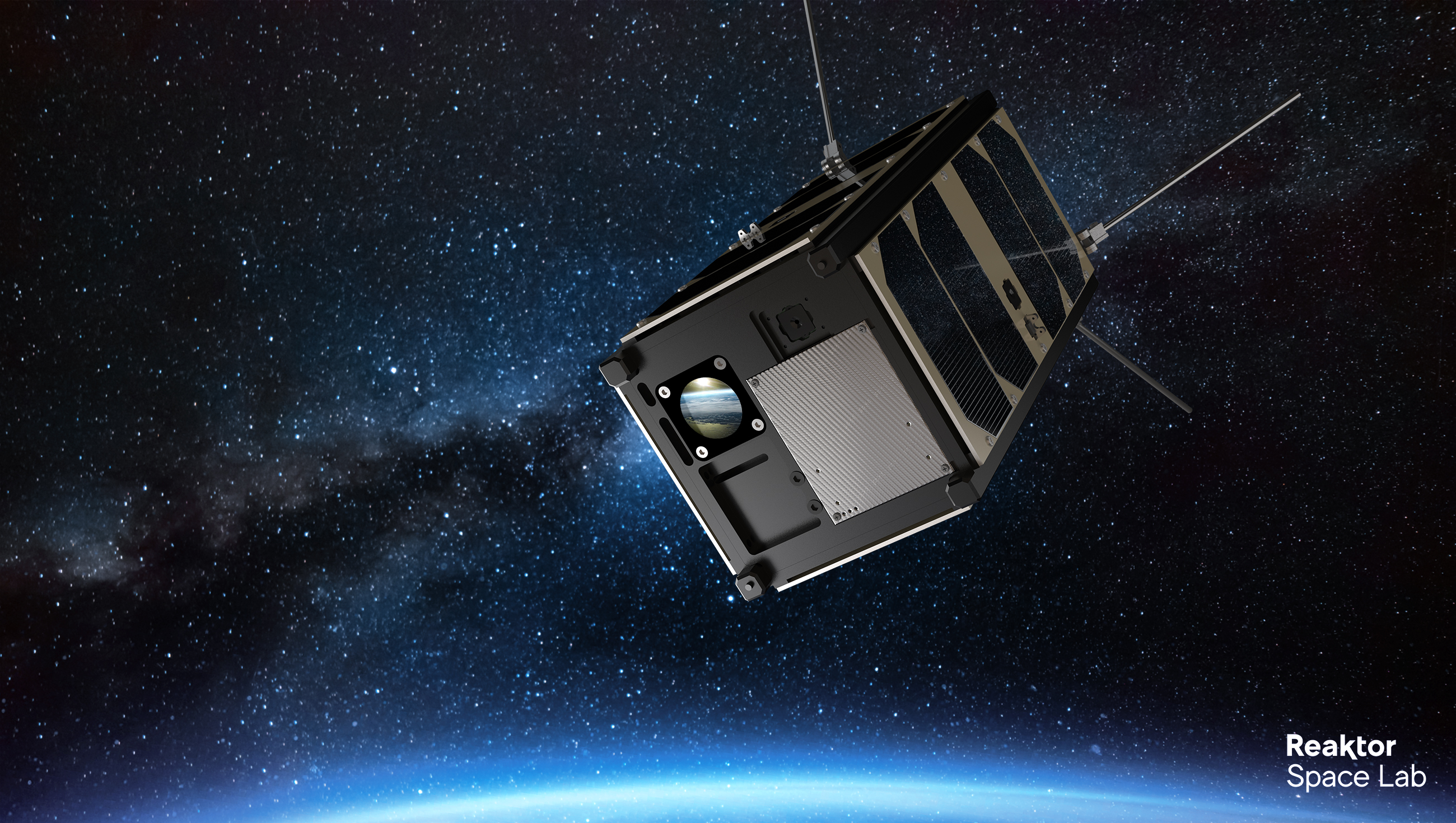[Editor’s note: Kuva Space was previously known as Reaktor Space Lab from the formation of the company in April 2016 until the end of September of 2021. This blog post was written before the Kuva Space brand renewal.]
Our first satellite Reaktor Hello World (RHW) has had quite a ride during its first year orbiting the Earth. It has traveled already over 200 million kilometers. If flying in a straight line rather than around the globe, the satellite would have gone past Mars and approaching the asteroid belt already! Plenty of things have happened during the first year. In this post we have collected some of the highlights.
The satellite was launched on the 29th of November in 2018 and right after that we were able to determine that all in-house developed safety critical subsystems of the satellite worked as expected. However, the journey was only in the beginning and yet to be determined if the satellite would perform as we hoped for a long time to come. But so it has – after a year, no serious malfunctions have been encountered in the unforgiving environment of space. Especially nothing that the satellite could not autonomously recover from. No degradation in the onboard systems have been noticed, even though flying through the harsh radiation environment of Earth’s polar regions every 45 minutes or so. Here are some onboard telemetry readings of the first year:

Satellite power consumption changes when the satellite is idling, performing nominal operations, imaging and communicating to our ground station.

Satellite temperature changes depending on power consumption as well as seasons.

Battery temperature changes depending on power consumption. The batteries don’t get as cold as the rest of the satellite due to their large thermal capacity – which is good.

Batteries have stayed nearly full since launch, except a couple of times when we forgot to shut down the payload and the onboard safety functions kicked in.
The mission’s primary objective, in addition to validating our onboard technologies is to test a novel infrared hyperspectral imager made by VTT Technical Research Centre of Finland. Already in the first weeks of operations, we could not keep our hands off the precious payload instrument and captured many breathtaking images from around the globe. The first photoshoot was done over the Sahara desert, from which we could already validate the satellite is able to detect soil moisture and mineral composition – something that has never been done with a nanosatellite before!

A single wavelength mosaic of the first images received from the Sahara desert
Because we did not yet have the satellite’s attitude control commissioned and it was tumbling around, we also caught the Earth’s horizon in multiple photoshoots by accident. There were clear traces of oxygen and water vapour in the images on certain wavelengths. While not a big surprise for us living here on Earth, little did we know that similar images have probably not been taken before and could be highly valuable for detecting different gases on other planets.

A contrast enhanced false color image of the atmosphere.
So far we have collected hundreds of images from different targets around the globe and are in the process of analysing the data even further. It takes time, as no other similar instrument has been used in a satellite before. Many of the potential applications for the data may not have even been identified yet. The imager itself is still working fine and our team has gathered valuable experience in how to make it even better for the next generation versions.

Image of northern Pakistan (River Kabul) from Google Earth

Images from Reaktor Hello World of same location: Single infrared wavelength (left) and land cover classification by combining multiple wavelengths (right). Two different types of agricultural fields are clearly distinguishable
The mission has been a great success and has raised our confidence level to use our satellite technology and the hyperspectral imager capabilities for some of the most ambitious new missions – as was the primary intended goal. At the moment, we’re developing a new higher resolution imager for Earth orbit applications as well as preparing for the first deep space asteroid prospecting missions using our improved satellite and imager technology among our other projects. We’ll keep you posted about these and further updates about the Hello World mission in the near future!
| Tuomas Tikka CEO – RSL RHW Commander |
Antti Näsilä Hyperspectral – VTT RHW Payload engineer |

